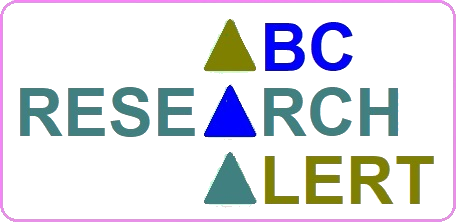Economic Contribution, Crisis and Prospects of Bengali Language: An Analysis
DOI:
https://doi.org/10.18034/ra.v12i1.676Keywords:
Bangla Language, Economic Contribution, Language Policy, Digital Technology, Cultural Industries, Language EconomicsAbstract
Despite being the sixth most spoken language in the world, the economic contribution of the Bengali language has long been overlooked. This study explores the economic significance, current challenges, and future potential of the Bengali language through an analytical framework. The primary objective of the research is to identify Bengali as an economic asset and to contribute to policymaking based on its value. A mixed-methods approach has been employed in this research, incorporating interviews, case studies, secondary data analysis, and the use of statistical information. Sources include academic literature, government reports, and expert opinions. Findings reveal that the Bengali language plays a substantial role in sectors such as services, education, culture, and digital platforms—especially in enhancing customer satisfaction, generating employment, and expanding online education. However, technological limitations, the dominance of English, and the lack of professional training act as major barriers to realizing its full economic potential. Based on the proposal for including an economic chapter in the national language policy (Bangla Academy, 2023) and Grin’s (2003) Language Economics Model, the study presents a proposed framework that can be applied to assess the economic value of language, its impact on productivity, and cost-benefit analysis for language policies. Overall, to strengthen and optimize the economic role of the Bengali language, an integrated language policy, technological inclusion of Bengali, and the development of training infrastructure are essential. The findings of this research may offer valuable guidance for policymakers, educators, and business sectors.
Downloads
References
Ahmed, M. (2021). Productivity impacts of native language training in Bangladeshi industries. Dhaka University Press.
Ahmed, M., & Karim, R. (2017). The impact of Bengali language proficiency on the local job market in Bangladesh. Journal of Language and Society, 10(2), 45–58.
Ahmed, N. (2018). Internationalization of Bangla language: Problems and prospects [বাংলা ভাষার আন্তর্জাতিকীকরণ: সমস্যা ও সম্ভাবনা]. Dhaka University Press.
Ahmed, S. (2021). Technological challenges in the digitization of Bangla language. Dhaka University Journal of Linguistics, 15(1), 23–37.
Akter, S. (2021). Use of Bengali language in call center communication: An analysis of customer engagement. Service Excellence Journal, 11(3), 89–101.
Bak, T., & Mehmedbegovic, D. (2023). The cognitive benefits of multilingualism. World Economic Forum.
Bangla Academy. (2023). Proposals for economic dimensions in language policy. Bangla Academy Publications.
Chakrabarti, P. (2017). The importance of linguistic diversity: A focus on Bangla. Journal of Cultural Studies, 8(1), 45-60.
Chowdhury, A. (2016). The role of Bangla language in education and employment. Journal of Edu-cation Research, 12(4), 112-125.
Chowdhury, R. (2018). Impact of Bangla and English language proficiency [বাংলা ও ইংরেজি ভাষায় দক্ষতার প্রভাব]. Journal of Multilingual Education, 9(1), 78-90.
Chowdhury, S. (2018). Native language support and customer loyalty in Bangladeshi financial in-stitutions. South Asian Journal of Business Studies, 5(2), 140-154.
Dhaka Chamber of Commerce & Industry. (2022, June 15). Corporate sector language requirements survey 2022.
Grin, F. (2003). Language policy evaluation and the European Charter: Evaluating policy measures. Palgrave Macmillan. DOI: https://doi.org/10.1057/9780230502666
Hasan, S. (2015). The importance of Bangla language education: A study [বাংলা ভাষা শিক্ষার গুরুত্ব: একটি গবেষণা]. Dhaka University Press.
Hossain, M. (2019). Language and customer satisfaction in the banking sector of Bangladesh. In-ternational Journal of Business Communication, 14(1), 112–130.
Hossain, M. (2019). The dominance of English in the global economy and its impact on Bangla. International Journal of Language Studies, 13(2), 45-62.
Hossain, M. (2023). Bangla language and technology: Future directions [বাংলা ভাষা ও প্রযুক্তি: ভবিষ্যৎ দিকনির্দেশনা]. Dhaka Tribune. https://www.dhakatribune.com
Iqbal, M. (2021). Technological development of Bangla language and its impact [বাংলা ভাষার প্রযুক্তিগত উন্নয়ন ও এর প্রভাব]. Journal of Language Technology, 14(2), 30-45.
Islam, M. (2020). The role of digital platforms in enhancing Bengali language education. World Eco-nomic Forum.
Islam, M. (2021). Expansion of online platforms in Bangla [বাংলা ভাষায় অনলাইন প্ল্যাটফর্মের প্রসার]. Digital Learning Journal, 11(1), 34–47.
Islam, M. (2022). The rise of online education in Bangla language. Journal of Digital Learning.
Islam, R. (2022). Enhancing public service delivery through Bangla: Evidence from government service portals. Journal of Public Administration and Policy Research, 17(1), 20–34.
Justice, L. M., Jiang, H., & Strasser, K. (2018). Linguistic Environment of Preschool Classrooms: What Dimensions Support Children’s Language Growth? Early Childhood Research Quarterly, 42, 79–92. https://doi.org/10.1016/j.ecresq.2017.09.003 DOI: https://doi.org/10.1016/j.ecresq.2017.09.003
Kabir, L. (2019). The economic value of mother tongue in urban service industries. Bengali Economic Perspectives, 3(1), 35–48.
Karim, M. (2020). Use and economic impact of Bangla language [বাংলা ভাষার ব্যবহার ও এর অর্থনৈতিক প্রভাব]. Bangladesh Economic Review, 23(1), 101–120.
Karim, M. (2021). Potential of Bangla language in global trade. International Business Review.
Karim, S., & Islam, T. (2022). Customer satisfaction in native language services: Evidence from Bangladesh. Journal of Business Communication, 59(2), 105-120.
Khan, F. (2023). The impact of multilingual service agents in Bangladesh: Bangla vs. English performance. Interna-tional Journal of Service Management, 15(2), 122–138.
Khan, N. (2018). Cultural development through Bangla language. Journal of Arts and Humanities.
Khandakar, A. (2020). Technological development and digitization through Bangla language [বাংলা ভাষার মাধ্যমে প্রযুক্তিগত উন্নয়ন ও ডিজিটালাইজেশন]. International Journal of Bangla Studies, 15(3), 123–137.
Mazumdar, P. (2018). Economic impact and potential of Bangla language in global economy. Journal of Economic Development, 22(2), 150–164.
Mazumdar, S. (2018). Economic impact of Bangla language proficiency: Effects on investment op-portunities. South Asian Economic Review, 11(3), 112–126.
Nahar, R. (2020). Communication barriers and language localization in Bangladesh’s healthcare services. Asian Journal of Health Communication, 8(4), 105–119.
Nahar, R. (2020). The lack of training in Bangla language proficiency. Journal of Language Education, 12(4), 78–92.
Rafiq, H. (2019). Tradition and modernization challenges of Bangla language [বাংলা ভাষার ঐতিহ্য এবং আধুনিকীকরণের চ্যালেঞ্জ]. Bangladesh Cultural Studies, 11(1), 56–70.
Rahman, A. (2019). Cultural influence of the Bengali language in global literature and entertainment. International Journal of Cultural Studies, 15(4), 231–245.
Rahman, A. (2020). The economic role of Bangla language in local businesses. Journal of Business and Economics.
Rahman, S. (2019). Bangla language and literature: Contemporary context [বাংলা ভাষা ও সাহিত্য: সমসাময়িক প্রেক্ষাপট]. Journal of Bengali Studies, 12(3), 45–67.
Rahman, T. (2020). The role of Bangla in digital customer care: A telecom sector study. Telecom Management Review, 9(2), 55–70.
Sarker, T. (2021). Impact of Bangla language in language education and communication [Conference presentation]. International Conference on Language and Culture, Dhaka.
Sen, R. (2019). Multilingual students and their advantages in multinational corporations. Business and Language Journal, 22(1), 77–89.
Sharma, A. (2022). Global market entry through Bangla language: Opportunities in translation and language training industry. Journal of Linguistic Economics, 8(3), 201–215.
Sultana, N. (2020). Bengali as a medium of service delivery: A case study on utility companies in Dhaka. Journal of Applied Linguistics in Business, 7(2), 66–78.
Sultana, N. (2020). Global perspectives on Bangla language potential [বৈশ্বিক দৃষ্টিতে বাংলা ভাষার সম্ভাবনা]. International Global Studies Journal, 18(1), 80–92.
UNESCO. (2020). Global education monitoring report: Inclusion and education – All means all. UNESCO Publishing. https://unesdoc.unesco.org/ark:/48223/pf0000373718
University Grants Commission. (2023). Annual report on higher education in Bangladesh 2023. UGC Publications.
Downloads
Published
Issue
Section
License
Copyright (c) 2024 Omar Faruque

This work is licensed under a Creative Commons Attribution-NonCommercial 4.0 International License.
ABC Research Alert is an Open Access journal. Authors who publish with this journal agree to the following terms:
- Authors retain copyright and grant the journal the right of first publication with the work simultaneously licensed under a CC BY-NC 4.0 International License that allows others to share the work with an acknowledgment of the work's authorship and initial publication in this journal.
- Authors are able to enter into separate, additional contractual arrangements for the non-exclusive distribution of the journal's published version of their work (e.g., post it to an institutional repository or publish it in a book), with an acknowledgment of its initial publication in this journal. We require authors to inform us of any instances of re-publication.
















